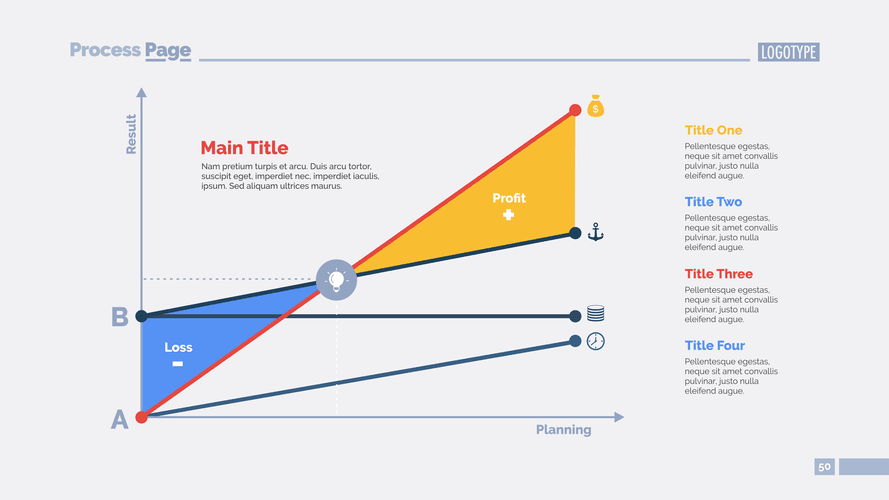Content

Small businesses can use double-entry bookkeeping as a way to better monitor the financial health of a company and the rate at which it’s growing. So, if assets increase, liabilities must also increase so that both sides of the equation balance.
What is commerce accounting?
What Is Accounting? Accounting is the process of recording financial transactions pertaining to a business. The accounting process includes summarizing, analyzing, and reporting these transactions to oversight agencies, regulators, and tax collection entities.
You need to acknowledge both sides of each transaction, and reflect it in your books. And of course you have to make an extra entry to do that – hence double-entry bookkeeping.
How To Set Up A Line Of Credit Account In Quicken
Each scenario uses a typical journal entry style that lists the account names, debits on the left, credits on the right and a memo below. Run financial statements straight out of the double-entry accounting system. When closing the books at the end of each accounting period, the net account totals in the double-entry accounting system are used to create the company’s trial and final balance. The final adjusted balances flow into financial statement line items. Accounting software can automate the integration and process flow necessary to do this. The general ledger reflects a two-column journal entry accounting system. Every business transaction has to be recorded in at least two accounts in the books.a.
- It is actually similar to keeping your own personal checkbook.
- You can use single-entry bookkeeping to calculate net income, but you can’t use it to develop a balance sheet and track the asset and liability accounts.
- By using double-entry accounting, you can be sure all of your transactions are following the rules of the accounting equation.
- Each accounting entry will adjust one account and have an equal but opposite effect on another account so that the debit account is always equal to the credit account.
- Each person should consult his or her own attorney, business advisor, or tax advisor with respect to matters referenced in this post.
- Additionally, most lenders require GAAP-compliant financial statements when evaluating loan applications from any private or public company.
The entry is a debit of $4,000 to the fixed assets account and a credit of $4,000 to the cash account. In this case, you are swapping one asset for another asset . Double-entry will better reflect the reality of the business. But supposing that you have no fixed assets, that you pay every bill the day you receive it, and that you get paid for all work the day you invoice it, then single-entry should do you just fine. The one thing to keep in mind is that if you ever scale your business up, you’ll want to shift to a new accounting model along with it. Hopefully, you now have a grasp on how double-entry accounting works and understand why it is integral to proper bookkeeping.
More Basic Accounting Resources
For a business that uses the cash method of accounting along with a double-entry bookkeeping system, taxable sales should also correspond with cash on hand minus outgoing revenue. If you want to keep track of asset and liability accounts, you want to use double-entry bookkeeping instead of single-entry. What causes confusion is the difference between the balance sheet equation and the fact that debits must equal credits. Keep in mind that every account, whether an asset, liability or equity, will have both debit and credit entries. When entering business transactions into books, accountants need to ensure they link and source the entry.
However, you must remember the fundamental principles for your business’s finances. One crucial fundamental principle is double-entry bookkeeping.
An example of a double-entry transaction would be if the company wants to pay off a creditor. The cash account would be reduced by the amount the company owes the creditor. Then, the double-entry reduces the amount the business now owes to the creditor account as it has received the amount of the credit the business is extending. Most businesses, even most small businesses, use double-entry bookkeeping for their accounting needs. Two characteristics of double-entry bookkeeping are that each account has two columns and that each transaction is located in two accounts. Two entries are made for each transaction – a debit in one account and a credit in another.
Strategies To Improve Cash Flow In 2021
This means that you are recording revenue while also recording an asset which represents the amount that the customer now owes you. The second entry is a $1,000 debit to the cost of goods sold account and a credit in the same amount to the inventory account.
What Is Double Entry Bookkeeping and How’s It Fit in General Ledger? – Investopedia
What Is Double Entry Bookkeeping and How’s It Fit in General Ledger?.
Posted: Sat, 25 Mar 2017 19:20:34 GMT [source]
Bench assumes no liability for actions taken in reliance upon the information contained herein. “It was just a whole revolution in the way of thinking about business and trade,” writes Jane Gleeson-White of the popularization of double-entry accounting in her book Double Entry.
What Is The Difference Between Single Entry And Double
Double-entry bookkeeping has been in use for at least hundreds, if not thousands, of years. Accounting has played a fundamental role in business, and thus in society, for centuries due to the necessity of recording transactions between parties. When you start a small business, one of your first financial decisions has to be whether you are going to use single or double-entry bookkeeping.

Bookkeeping and accounting track changes in each account as a company continues operations. Double entry accounting requires that what we do one side – we need to do to the other side or we need to negate what we did to that one side. This might seem a little confusing—but all you need to remember is that any transaction is both a credit and debit. Pilot is not a public accounting firm and does not provide services that would require a license to practice public accountancy.
Building the structures that support scaling and growth will open up investment opportunities, streamline financial management, and allow you to make wiser financial decisions. You also won’t need to invest in any bookkeeping software or services, as a simple Excel sheet is enough. At Pilot, we have a team of expert bookkeepers using powerful software to eliminate the most error-prone aspects of bookkeeping. When you set up a new business, one of the first things you need to decide is which bookkeeping system to use — double-entry or single-entry.
What Is Bookkeeping? A Small
Business Checking Accounts BlueVine Business Checking The BlueVine Business Checking account is an innovative small business bank account that could be a great choice for today’s small businesses. Fora Financial is a working capital provider to small business owners nationwide. If you’d like to see a topic covered on the Fora Financial blog, or want to submit a guest post, please email us at . Experts even say that double-entry accounting created finance as we know it today. The entry is a debit of $8,000 to the cash account and a credit of $8,000 to the common stock account. Merchant Maverick’s ratings are editorial in nature, and are not aggregated from user reviews. Each staff reviewer at Merchant Maverick is a subject matter expert with experience researching, testing, and evaluating small business software and services.
If the accounting entries are recorded without error, the aggregate balance of all accounts having Debit balances will be equal to the aggregate balance of all accounts having Credit balances. The accounting entries are recorded in the “Books of Accounts”. Regardless of which accounts and how many are involved by a given transaction, the fundamental accounting equation of assets equal liabilities plus equity will hold. In double-entry accounting, businesses can use any combination of the five types of accounts — assets, liabilities, equity, revenue, expense, gains and losses — when recording transactions.
Proper Training Allows For Accurate Record
Below is an example of double-entry accounting for buying a piece of equipment in cash. The journal entry puts the van on the books by increasing the balance in the asset account. It reduces the balance in the cash account with a credit for the same amount.

To illustrate, let’s say you deposit a $1,000 check from a customer into your bank account. To record the deposit, you increase cash and increase revenue . Sometimes, people show double-entry accounting as a T-account, which is a visual representation of the effect a transaction has on the accounts involved.
Example 3: Recording Client Revenue At A Law Firm
As the volume of transactions increases, this becomes more difficult. Thus, the asset account is increased with a debit and the liabilities account is equally increased with a credit. After the transaction is completed, both sides of the equation are in balance because an equaldebitandcreditwere recorded. So for each transaction at least two accounts are involved – with at least one on the debit and one on the credit side.
Every time we do a transaction you’re going to have at least one debit and at least one credit. The total amount of the debits in that transaction must also equal the total amount of the credits. So, if you have one debit and one credit, they need to be the same. If you have multiple debits and credits, the sum of all debits needs to equal the sum of all credits. Instead of ensuring that you’re meticulously recording every transaction twice, apps and software can automate this whole process. The best options can even turn this double-entry system into income statements and balance sheets with a few clicks. We’ve mentioned quite a few drawbacks of single-entry bookkeeping already, but the method definitely has a big plus, too — simplicity.
Answer to What is double entry accounting? by Adyasha Anjalee Ghadai https://t.co/LgNG88H7w6
— Adyasha Anjalee Ghadei (@AnjaleeGhadei) May 23, 2020
The chart of accounts is a bunch of more meaningful and intuitive categories for your business transactions – like sales, supplies, wages, and loans. When you classify a transaction to a chart of accounts code, it will filter into the right accounting bucket – and ultimately into the right report. With double-entry bookkeeping, you create two accounting entries for each of your business transactions. There are several different types of accounts that are used widely in accounting – the most common ones being asset, liability, capital, expense, and income accounts. The DEAD rule is a simple mnemonic that helps us easily remember that we should always Debit Expenses, Assets, and Dividend accounts, respectively. The normal balance in such cases would be a debit, and debits would increase the accounts, while credits would decrease them.
The sum of every debit and its corresponding credit should always be zero. This type of bookkeeping is not for large, complex companies. It does not track accounts like inventory, accounts payable, and accounts receivable. You can use single-entry bookkeeping to calculate net income, but you can’t use it to develop a balance sheet and track the asset and liability accounts.
- Although you can track net income and formulate an income statement using a single-entry system, you won’t be able to put together a balance sheet.
- A professional will see the ripple effect of a transaction immediately.
- Use our research library below to get actionable, first-hand advice.
- If you’re a visual learner, then boy oh boy do we have some great examples for you.
- Small businesses with more than one employee or looking to apply for a loan should also use double-entry bookkeeping.
- If you buy an asset, your cash account is debited the cost of the asset, while your asset accounts are credited by the cost of the asset—this is how the transaction is recorded twice.
To account for the credit purchase, entries must be made in their respective accounting ledgers. Because the business has accumulated more assets, a debit to the asset account for the cost of the purchase ($250,000) will be made. To account for the credit purchase, a credit entry of $250,000 will be made to notes payable. The debit entry increases the asset balance and the credit entry increases the notes payable liability balance by the same amount. The reason this equation works as an error check is because of the double-entry accounting method.
Alternatives Looking for a different set of features or lower price point? Check out these alternative options for popular software solutions. Applicant Tracking Zoho Recruit Zoho Recruit combines a robust feature set with an intuitive user interface and affordable pricing to speed up and simplify the recruitment process. Our unbiased reviews and content are supported in part by affiliate partnerships, and we adhere to strict guidelines to preserve editorial integrity. The editorial content on this page is not provided by any of the companies mentioned and has not been reviewed, approved or otherwise endorsed by any of these entities. See our expert’s shortlist of invoicing software to help your business run smoothly. I’m an an engineer who is stepping into the position of helping with finances for a small startup, so your primer here is very helpful.
Why capital is treated as a liability?
Capital is an Internal liability because an enterprise must repay the owners the amount of cash, goods, assets invested into its formation. It is also known as the claims of the owners against the Assets of the business.
Once one understands the DEAD rule, it is easy to know that any other accounts would be treated in the exact opposite manner from the accounts subject to the DEAD rule. Double entry refers to a system of bookkeeping that, while quite simple to understand, is one of the most important foundational concepts in accounting. Basically, double-entry bookkeeping means that for every entry into an account, there needs to be a corresponding and opposite entry into a different account. It will result in a debit entry in one or more accounts and a corresponding credit entry in one or more accounts.

It is still the most commonly used accounting method that complies with Generally Accepted Accounting Principles . The books – or ledger – for a business are made up of five main accounts, which are split into groups. The theoretical value of the business that would be distributed to the owners after the assets were sold and the liabilities paid. The modern double-entry bookkeeping double entry accounting system can be attributed to the 13th and 14th centuries when it started to become widely used by Italian merchants. Ken Boyd is a co-founder of AccountingEd.com and owns St. Louis Test Preparation (AccountingAccidentally.com). He provides blogs, videos, and speaking services on accounting and finance. Ken is the author of four Dummies books, including “Cost Accounting for Dummies.”
If you’re on the fence about making the switch to this type of accounting, it’s time to go forward. Whether you’re trying to get a loan, doing taxes, or even selling your business, double-entry bookkeeping is a prerequisite.
